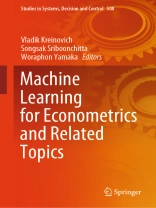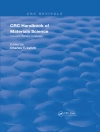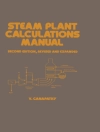In the last decades, machine learning techniques – especially techniques of deep learning – led to numerous successes in many application areas, including economics. The use of machine learning in economics is the main focus of this book; however, the book also describes the use of more traditional econometric techniques. Applications include practically all major sectors of economics: agriculture, health (including the impact of Covid-19), manufacturing, trade, transportation, etc. Several papers analyze the effect of age, education, and gender on economy – and, more generally, issues of fairness and discrimination.
We hope that this volume will:
help practitioners to become better knowledgeable of the state-of-the-art econometric techniques, especially techniques of machine learning,and help researchers to further develop these important research directions. We want to thank all the authors for their contributions and all anonymous referees for their thorough analysis and helpful comments.
Daftar Isi
Preface.- An Invitation to Wasserstein Distance in Financial Risk Measures.- What Makes a Good Model?.- Quantifying Fairness and Discrimination in Predictive Models.- Slow-growing Trees.- Metrics on Probability Distributions Through Optimal Commuting Maps.- Using Machine Learning Methods to Estimate the Gender Wage Gap.- Forecasting Market Index of Stock Exchange of Thailand, Malaysia and Singapore with the Gaussian Process Regression Model.- The A Priori Procedure (APP) for Estimating Standardized Regression Coefficients in Multiple Linear Model with Skew Errors.- Why Rectified Linear Unit is Efficient in Machine Learning: One More Explanation.- A Possible Common Mechanism Behind Skew Normal Distributions in Economics and Hydraulic Fracturing-induced Seismicity.- Why Quantile Regression Works Well in Economics: A Partial Explanation.- Trade with Heterogeneous Firms, Distance, and Time: An Analysis of Latin American and the Caribbean (LAC) Manufacturing Firms.- Analysis and Prediction of Suitable Model for Coconut Production Estimates in South Indian States.- Portfolio Management of SET50 Stocks Using Deep Reinforcement Learning Methods.- Household Characteristics and the Pattern of Gambling, Alcohol and Tobacco Expenditures.- Effects of Household Income and Parental Absence on Investment in Child Education in Thailand: Evidence from Quantile-on-Quantile Approach.- The Spatial Spillover Effects of Transportation Infrastructure on Economic Development in China.- Analyzing the Survival Probability of Community Enterprise under the Situation of the COVID-19 Pandemic in Northern Thailand.- Bayesian Consideration for Trust in Ewom: Evidence from Vietnam.- An Application of Explainable Artificial Intelligence in Credit Scoring.- Assessing Strategies for Adaption to Survive the COVID-19 Situation of OTOP Operators in Thailand.- The Effects of Oil Price Changes on Inflation in Leading Crude Oil Importing Countries: An Application of Linear ARDL and Non-linear ARDI.- Contagion Effects Among Selected Asian Stock Markets during the COVID-19 Pandemic: A Dynamic Conditional Correlation Approach.- The Nexus of the Nikkei 225, Gold, and Crude Oil. Do They Have a Co-Movement in the Long Run? New Evidence for Cointegration from the Autoregressive Distributed Lag Bounds Test.- Competitiveness and Complementarity of Agricultural Products Between China and Vietnam on Short-term Analysis.- Does Contract Farming Improve Farmers’ Income? The Case of Pineapple Farmers in Nong Khai and Loei, Thailand.- Implications of Aging Population and Health Spending for Thai Economic Growth.- Portfolio Diversification Using Enhanced Markowitz Model with Traditional Asset Classes and Cryptocurrencies.- ESG Ratings and Stock Mispricing: A Moderated Mediation Model.- The Role of Socio-demographics and Aging Society on the Change of Agricultural Labor in ASEAN.- Prediction of Financial Contagion and Spillover Effects of the US Financial Crisis Using Google Index.- The Impact of China-United States Trade War on the Relationship among the Exchange Rates: the Case of China, Korea, and Japan.












